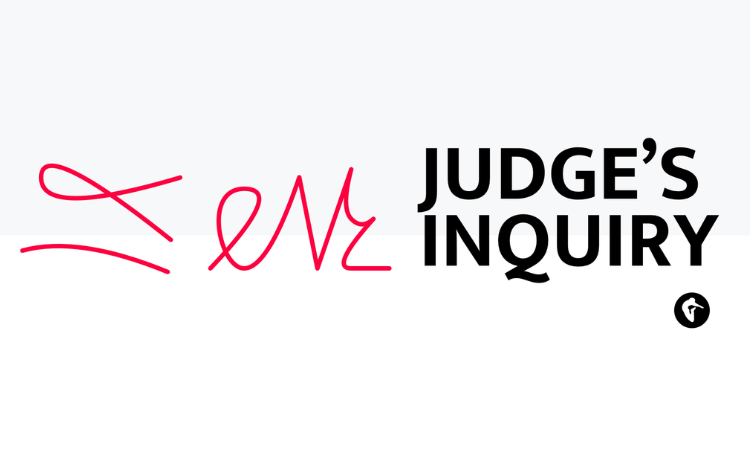If you’ve watched the floor exercise at any gymnastics competition—from the six-year-olds competing for the first time to the NCAA National Championship—you’ll notice that the gymnasts do a combination of acrobatic tumbling passes, choreography, and a dance pass.
The requirements for a dance pass in NCAA gymnastics are relatively simple. Gymnasts must complete a dance pass with at least two different skills, one must be a leap off of one foot, and at least one has to show a full (180 degree) split, either to the front or side. The skills don’t have to be directly connected to fulfill the requirement but the athlete has to keep moving from one to the next.
There is also a compositional requirement (which is a flat one tenth deduction if it’s missing), that requires a gymnast to do a dance pass with enough difficulty to earn a one tenth bonus to their score, either by doing a D/E difficulty skill, or by directly connecting two C level skills.
Gymnasts have to earn at least six tenths total in bonus on floor, and this requirement makes sure that the bonus comes from both acrobatic and dance skills. In NCAA, gymnasts receive one tenth bonus for completing two C dance elements or a D and a B dance element back-to-back. If the gymnast opts for the D+B combination, they would receive a total of two tenths bonus: one for performing a D level skill, and an additional tenth for connecting it to a B or higher difficulty level skill.
As a judge, step one in judging a dance pass is recognizing the skill that the gymnast performs. Since many of the skills look alike, I’ve included a reference at the end of this article of some of the most common dance skills we see in NCAA as well as their values, so you can practice recognizing them.
Once the judge has identified and recorded the skill in their notes, they have to evaluate how well it was executed. The three most important things we look for are the take-off position and angle, the body position in the air, and the landing position and angle. You can imagine a judge taking three mental photographs at each point of the skill.
For the take off, judges are mostly looking at the position and orientation of the feet and the hips, so they can determine how much turn/rotation there was in the jump or leap. Since most of the C and D/E level skills spin in the air, this is a crucial part in evaluating the precision of the turn/jump. The take-off angle is determined by the position of the feet when they leave the floor, which can be tricky when the hips and feet are not aligned.
In the air, the judges are looking at the body position. Does the gymnast reach a full 180 degree split? Are the arms and torso in an appropriate position? Are the legs straight and toes pointed? For skills with a ring position, judges look to see if the back leg is sufficiently bent, that the foot is at head height, and the head and upper back are arched back so the chin is vertical.
Upon landing, judges again look to see the direction of the feet when they initially land, as well as if the gymnast was able to have enough height and dynamics to return the body to a natural landing position, whether that is pulling the legs back together or extending the body prior to landing. Based on the take off and landing orientation of the gymnast’s feet, the judge determines how much of the turn the gymnast completed in the air.
On floor, only half or full turns are allowed, and depending on how far off (up to 90 degrees) a gymnast was from the 180 or 360 degree mark, judges can deduct up to two tenths. Here are some of the other common deductions in a Dance Pass:
Up to one tenth deduction
- Incorrect body posture/alignment: leaning forward or off balance during the dance element
- Precision in dance elements: Lack of a definite arm/leg position or precise completion of turn
- Failure to land with feet together on leaps/jumps to two feet
Up to two tenths deduction
- Insufficient height
- Insufficient split: not hitting a 180 degree split or straddle
- Incomplete turn: As described above, not completing the 180 or 360 degree turn
- Legs not parallel to the floor: Some skills like ring jumps are designed to have a split at and angle and would not receive the deduction
Up to three tenths
- Bent legs: obviously only applicable for skills where the legs are supposed to be straight
As promised, here’s a mini-glossary of some common leaps/jumps we see in NCAA gymnastics. This is by no means exhaustive, but will hopefully help you in identifying various skills.
Switch Leaps:
- Switch leap (B)
- Switch ring leap (C)
- Switch leap half (C)
- Switch leap full (D)
(she doesn’t quite get it all the way around)
- Switch ring half (D)
(her head release is a little early so she doesn’t hit the perfect ring position)
- Switch Side Leap (C)
- Switch Side Half (D)
Tour Jetes:
- Tour jete half (C)
- Tour jete full (D)
(she doesn’t quite get it all the way around)
Turning Jumps:
- Straddle Full (Popa) (C)
- Split Full (C)
- Wolf full (C)
READ THIS NEXT: New NCAA Gymnastics Rules, Modifications, and What They All Mean for the 2024 Season
Article by Rhiannon Franck
Rhiannon Franck is a former national-rated NAWGJ women’s gymnastics judge with over 15 years of USAG judging experience and nine seasons judging NCAA gymnastics. Outside of gymnastics, Franck works at a university as a nursing professor and loves to travel.





3 comments
Comments are closed.